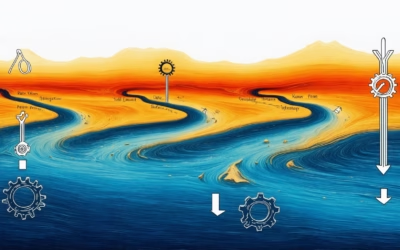Key Takeaways
- Mastering the formula for customer acquisition cost (CAC) is crucial for optimizing marketing strategies and driving profitability.
- The calculation for customer acquisition cost involves dividing total marketing and sales expenses by the number of new customers acquired, providing clear insights into spending efficiency.
- A lower CAC indicates a more effective acquisition strategy, while a higher CAC may signal the need for optimization to enhance business growth.
- Integrating tools like customer acquisition cost calculators can simplify the process and improve accuracy in tracking CAC over time.
- Understanding CAC in relation to customer lifetime value (CLV) is essential for ensuring sustainable growth and informed decision-making.
In today’s competitive business landscape, understanding the formula for customer acquisition cost (CAC) is essential for driving growth and ensuring profitability. This article will delve into the intricacies of customer acquisition cost, exploring its significance and the calculations that underpin it. We will break down the calculation for customer acquisition cost, providing clarity on the equation for customer acquisition cost and its various components. Additionally, we will connect CAC to customer lifetime value (CLV), offering insights into what constitutes a good customer acquisition cost and real-world applications of these formulas. By the end of this guide, you will have a comprehensive understanding of how to calculate your CAC effectively, including the formula for customer acquisition rate and practical steps to optimize your acquisition strategies. Join us as we master the formula for customer acquisition cost and unlock the potential for sustainable business growth.
Understanding the Importance of Customer Acquisition Cost
Customer Acquisition Cost (CAC) is a critical metric that helps businesses understand the financial investment required to acquire new customers. By analyzing CAC, companies can evaluate the effectiveness of their marketing strategies and make informed decisions to optimize their customer acquisition efforts. A well-calculated CAC not only aids in budgeting but also provides insights into the overall health of a business’s growth strategy.
What formula is used for CAC?
To accurately calculate Customer Acquisition Cost (CAC), use the following formula:
CAC = (Total Marketing and Sales Expenses) / (Number of New Customers Acquired)
- Define the Time Period: Choose a specific timeframe for your analysis, such as a month, quarter, or year. This period should align with your business’s sales cycle for more relevant insights.
- Calculate Total Expenses: Sum all marketing and sales expenses incurred during the chosen period. This includes:
- Advertising costs (digital, print, etc.)
- Salaries and commissions for sales and marketing teams
- Software and tools used for customer acquisition (e.g., CRM systems)
- Any additional costs related to promotional campaigns
- Determine New Customers: Count the number of new customers gained during the same period. Ensure that this figure reflects only those customers acquired through the marketing and sales efforts being evaluated.
- Apply the Formula: Insert your total expenses and new customer count into the formula to derive your CAC. This figure provides insight into how much your business spends to acquire each new customer.
Understanding CAC is crucial for evaluating the efficiency of your marketing strategies and ensuring sustainable growth. A lower CAC indicates a more efficient acquisition strategy, while a higher CAC may signal the need for optimization. For further insights, consider integrating tools like Messenger Bot, which can enhance customer engagement and potentially lower CAC by automating interactions and streamlining the customer journey.
The calculation for customer acquisition cost CAC is essential for business growth.
Regularly monitoring and optimizing your CAC allows you to make informed decisions that drive profitability and growth in your business. By understanding the calculation for customer acquisition cost, you can identify trends and adjust your marketing strategies accordingly. This proactive approach not only helps in maintaining a healthy CAC but also supports long-term business sustainability.
Understanding the Importance of Customer Acquisition Cost
Understanding the formula for customer acquisition cost (CAC) is vital for any business aiming to enhance its marketing efficiency and overall profitability. The calculation for customer acquisition cost provides insights into how much a company spends to acquire a new customer, which can significantly influence strategic decisions. By mastering this formula, businesses can optimize their marketing strategies and improve their bottom line.
What formula is used for CAC?
The formula for Customer Acquisition Cost (CAC) is essential for businesses to understand their marketing efficiency and overall profitability. The CAC formula is calculated as follows:
- Identify Total Costs: Combine your total costs of sales and marketing over a specific period. This includes:
- Cost of Sales: Salaries, commissions, and bonuses for sales personnel, as well as any sales-related expenses.
- Cost of Marketing: Advertising expenses, content creation, social media management, and any other marketing-related costs.
- Determine New Customers Acquired: Count the number of new customers gained during the same timeframe.
- Calculate CAC: Use the formula:
CAC = (Total Cost of Sales + Total Cost of Marketing) / Number of New Customers Acquired
For example, if a company spends $100,000 on sales and marketing in a quarter and acquires 1,000 new customers, the CAC would be $100. Understanding CAC is crucial for businesses to optimize their marketing strategies and improve profitability. According to a study by HubSpot, companies with a clear understanding of their CAC can make more informed decisions about scaling their marketing efforts and improving customer retention.
The calculation for customer acquisition cost CAC is essential for business growth.
Integrating tools like Messenger Bots can enhance customer engagement and potentially lower CAC by automating responses and nurturing leads more efficiently. By streamlining communication, businesses can improve conversion rates and reduce the time and resources spent on customer acquisition. This not only aids in understanding the formula for customer acquisition cost but also aligns with the formula for customer acquisition cost in marketing, ensuring that every dollar spent is maximized for growth.
Breaking Down the Formula for Customer Acquisition Cost
Understanding the formula for customer acquisition cost (CAC) is vital for any business aiming to grow sustainably. The calculation for customer acquisition cost provides insights into how much a company spends to acquire each new customer, allowing for better budgeting and strategic planning. The formula can be expressed as:
CAC = Total Costs Attributable to Attracting Non-Customers / Number of Customers Acquired
This equation highlights the importance of tracking both the total costs involved in marketing and sales efforts and the number of new customers gained during a specific period. For instance, if a business spends $10,000 on marketing and successfully acquires 100 new customers, the CAC would be $100. This metric is essential for evaluating the effectiveness of marketing strategies and ensuring alignment with profitability goals.
What is the formula for calculating customer acquisition cost CAC?
The formula for calculating customer acquisition cost CAC is straightforward but requires careful consideration of all associated costs. To accurately determine CAC, businesses should include:
- Marketing Expenses: All costs related to advertising, promotions, and campaigns aimed at attracting new customers.
- Sales Expenses: Salaries and commissions for sales personnel involved in acquiring new customers.
- Operational Costs: Any additional costs directly tied to the customer acquisition process.
By summing these costs and dividing by the number of new customers acquired, businesses can derive a clear understanding of their CAC. This understanding is crucial for optimizing marketing strategies and improving overall customer engagement.
Formula for customer acquisition cost in marketing: Key Components
The formula for customer acquisition cost in marketing encompasses several key components that contribute to the overall calculation. These components include:
- Advertising Spend: The total amount spent on various advertising channels, including digital, print, and social media.
- Promotional Costs: Expenses related to discounts, offers, and other promotional activities designed to attract new customers.
- Sales Team Expenses: Costs associated with hiring, training, and compensating sales staff who play a crucial role in customer acquisition.
Understanding these components allows businesses to refine their marketing strategies and reduce the customer acquisition cost, ultimately leading to improved profitability. For more detailed insights on optimizing CAC, consider exploring resources like this guide.
Understanding the CAC Ratio and Its Significance
The Customer Acquisition Cost (CAC) ratio is a crucial metric for businesses to evaluate the efficiency of their marketing and sales efforts. Understanding this ratio can significantly impact your overall business strategy and profitability. The formula for calculating the CAC ratio is:
CAC Ratio = Customer Acquisition Cost / Customer Lifetime Value (CLV)
Formula for Calculating Customer Acquisition Cost: Step-by-Step Guide
To effectively calculate your CAC, you need to understand the components involved. The calculation for customer acquisition cost (CAC) includes all expenses related to acquiring new customers. Here’s how to break it down:
- Customer Acquisition Cost (CAC): This is the total cost associated with acquiring a new customer, which includes marketing expenses, sales team salaries, and any other costs incurred during the acquisition process. It can be calculated using the formula:
CAC = (Total Marketing Expenses + Total Sales Expenses) / Number of New Customers Acquired - Customer Lifetime Value (CLV): This metric estimates the total revenue a business can expect from a single customer account throughout their relationship. CLV can be calculated using:
CLV = Average Purchase Value x Average Purchase Frequency x Average Customer Lifespan
By understanding these formulas, you can effectively assess your customer acquisition strategies and make informed decisions to enhance profitability.
Is Customer Acquisition Cost COGS? Exploring the Relationship
Understanding whether customer acquisition cost (CAC) is considered part of the Cost of Goods Sold (COGS) is essential for accurate financial reporting. Generally, CAC is not classified as COGS. COGS refers to the direct costs attributable to the production of goods sold by a company, while CAC encompasses the expenses related to acquiring new customers. However, both metrics are vital for evaluating overall business performance.
For further insights into optimizing customer acquisition strategies, consider exploring resources from authoritative sources such as HubSpot and Investopedia, which provide in-depth analyses and case studies on effective customer acquisition techniques.
Calculating CAC: Tools and Techniques
Understanding the calculation for customer acquisition cost (CAC) is essential for any business aiming to optimize its marketing strategies. The formula for calculating customer acquisition cost is straightforward, yet it provides critical insights into your marketing efficiency. By mastering this formula, you can make informed decisions that drive growth and profitability.
Formula for Customer Acquisition Cost Calculator: Simplifying the Process
The formula for customer acquisition cost can be simplified using a customer acquisition cost calculator. This tool allows businesses to input their total sales and marketing expenses alongside the number of new customers acquired. The basic formula is:
- CAC = Total Sales and Marketing Expenses / Total Number of Customers Acquired
For example, if your business spends $50,000 on marketing and acquires 500 new customers, the calculation would be:
- CAC = $50,000 / 500 = $100
Utilizing a customer acquisition cost calculator can streamline this process, making it easier to track and analyze your CAC over time.
The Equation for Customer Acquisition Cost: A Comprehensive Overview
To fully grasp the equation for customer acquisition cost, it’s important to consider all components involved. The formula for customer acquisition rate includes not just direct marketing costs, but also indirect costs such as:
- Advertising expenses
- Sales team salaries
- Software tools and platforms
- Training and onboarding costs
By incorporating these elements, you can achieve a more accurate understanding of your CAC. Additionally, businesses should regularly assess whether customer acquisition cost is COGS (Cost of Goods Sold) to ensure that all relevant expenses are accounted for in their financial analyses.
For more insights on optimizing your customer acquisition strategies, consider exploring resources from HubSpot and Investopedia.
How do I calculate my CAC?
Calculating your Customer Acquisition Cost (CAC) is essential for understanding the effectiveness of your marketing and sales strategies. To calculate CAC, follow these steps:
- Identify Costs: Gather all expenses related to acquiring new customers over a specific time frame. This includes:
- Marketing expenses (advertising, promotions, content creation)
- Sales team salaries and commissions
- Software and tools used for customer acquisition (CRM systems, analytics tools)
- Any other overhead costs directly tied to customer acquisition efforts
- Total Costs: Sum all the identified costs. For example, if your total marketing expenses for a quarter are $50,000, and sales costs are $30,000, your total acquisition cost would be $80,000.
- Count New Customers: Determine the number of new customers acquired during the same period. If you gained 200 new customers, this figure will be used in the calculation.
- Calculate CAC: Divide the total costs by the number of new customers. Using the previous example:
- CAC = Total Costs / New Customers
- CAC = $80,000 / 200 = $400
- Analyze and Optimize: Once you have your CAC, analyze it in relation to the Customer Lifetime Value (CLV) to ensure that your acquisition strategies are sustainable. A common benchmark is to aim for a CAC that is less than one-third of your CLV.
For further insights, consider utilizing tools like Messenger Bot to streamline customer interactions and potentially lower acquisition costs by enhancing customer engagement and support. According to a study by HubSpot, businesses that use chatbots can reduce customer acquisition costs by up to 30% due to improved efficiency in handling inquiries.
Customer acquisition cost calculator: Finding the Right Tool
Using a customer acquisition cost calculator can simplify the process of determining your CAC. These tools often allow you to input your marketing and sales expenses, as well as the number of new customers acquired, to automatically calculate your CAC. Many online calculators are available, but ensure that the tool you choose aligns with your specific business needs and provides accurate results.
For example, platforms like Brain Pod AI offer various analytics tools that can assist in calculating and optimizing your customer acquisition costs effectively. By leveraging such tools, you can gain deeper insights into your marketing performance and make data-driven decisions to enhance your customer acquisition strategies.
How do I calculate my CAC?
Calculating your Customer Acquisition Cost (CAC) is crucial for understanding the efficiency of your marketing efforts and overall business health. The formula for calculating customer acquisition cost involves dividing the total costs associated with acquiring new customers by the number of customers acquired during a specific period. This calculation provides a clear picture of how much you are spending to gain each new customer.
Customer acquisition cost calculator: Finding the Right Tool
To simplify the calculation for customer acquisition cost, many businesses utilize a customer acquisition cost calculator. These tools can automate the process, allowing you to input your total marketing expenses, sales costs, and the number of new customers acquired. Popular platforms like HubSpot offer built-in calculators that can help streamline this process. By using these calculators, you can quickly assess your CAC and make informed decisions about your marketing strategies.
Formula for customer acquisition rate: Understanding the Metrics
The formula for customer acquisition rate is another essential metric that complements CAC. To calculate this rate, divide the number of new customers acquired in a specific period by the total number of customers at the beginning of that period, then multiply by 100 to get a percentage. This metric helps you understand how effectively your business is growing its customer base over time. A lower CAC combined with a higher customer acquisition rate indicates a healthy growth trajectory for your business.







